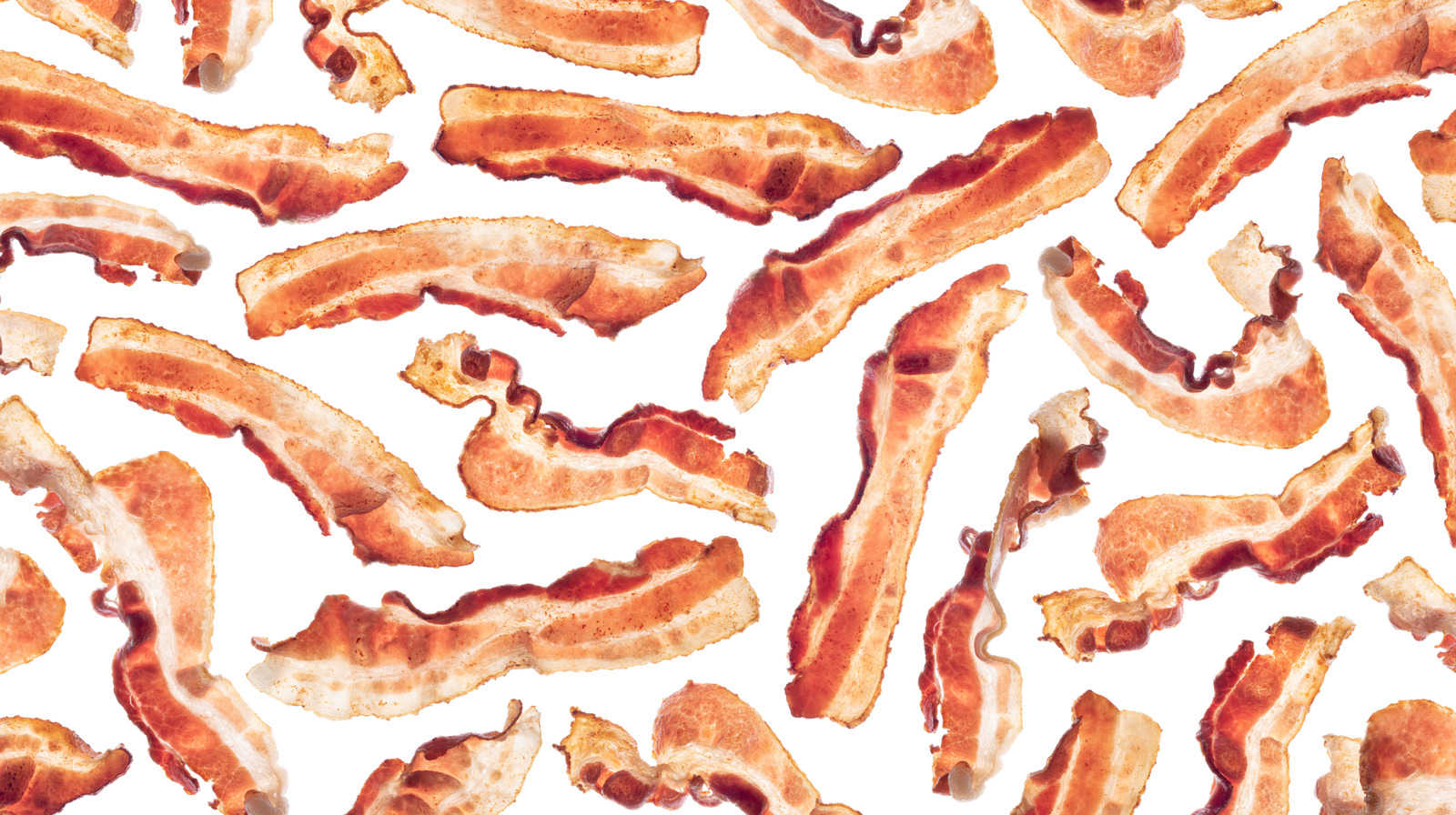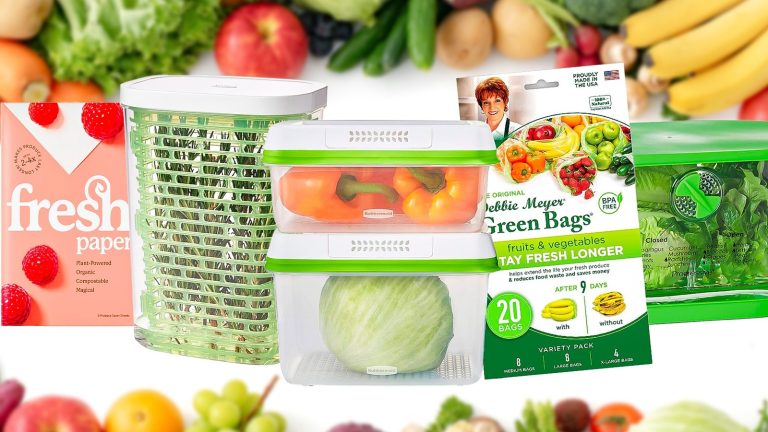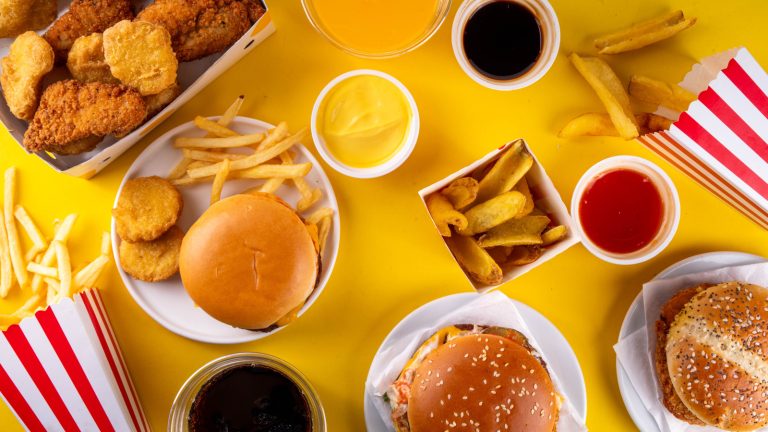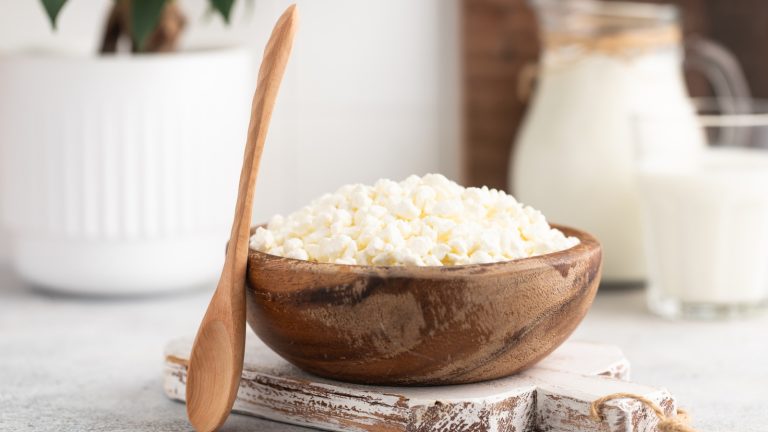If you are a fan of bacon, then you probably know exactly how you want it to be cooked. Some people like it super crispy, and some like it somewhere in the middle, but either way, this salty, fatty meat is a satisfying breakfast staple in many households across the country. It’s not always the most fun thing to cook though, as you’re always at risk of some scalding hot bacon fat spattering out the pan while your rashers are sizzling, and it all makes a big mess too. This is why cooking bacon in the oven is my preferred method. It’s so handy for many reasons, and produces really good, evenly cooked bacon every time.
If you’re cooking for your family, or you’re making a large amount of bacon for any reason, you have to batch cook it when you’re using a pan. When you’re preparing bacon in the oven, you can make a lot more in one go. This method is a clever way to cook bacon for snacking or for meal prepping some for the week. As the owner of a catering business, making bacon in the oven is my secret to cooking large amounts for my client’s breakfast and brunch orders. The bacon comes out even, with much less mess. If you’re a non-believer, you’ve got to give it a go and see for yourself. But there are some things to keep in mind, so that you can get it just right. Here are some make or break tips for cooking bacon in the oven.
Don’t go straight from fridge to oven
Many of us can be impatient when we feel hungry, which then leads to wanting to whip up something as quickly as possible. Even when it’s not about hunger, we may not want to take long with cooking because we all have busy lives to get back to. But no matter how rushed you might feel, you want to avoid cooking your bacon straight out of the fridge. This is a good rule of thumb for any type of meat or fish that you’re cooking. Cold meat will seize up and tense as soon as it hits the heat, and you risk your bacon being dry and tough.
It’s always a good idea to remember to take your bacon out to let it get to room temperature while you’re preparing something else. If you’re skeptical that it makes a difference, trust me, it does. There are times when I’ve made bacon in a hurry, straight from the fridge to a hot oven, and while bacon is always going to be tasty, it’s just not as good as when I let the bacon sit out for 5 to 10 minutes before cooking.
Cook it low and slow
One of the common misconceptions about preparing bacon, whatever the method, is that you have to cook it quickly on high heat. I used to think this too. However, just like with bringing bacon to room temperature first, taking time to cook bacon slowly has actually yielded some of the best results. Yes, we all love crispy bacon, but there’s crispy bacon that’s a delight to eat, and there’s crispy bacon that’s too hard and borders on being burnt. Often the reason for this is cooking your bacon at too high a heat. This is also a common mistake people make when making bacon in the oven. The best way to cook bacon is low and slow.
Patience is key. If you think your bacon is cooked but isn’t crispy yet, resist the urge to crank up the temperature. It will get there. And as it’s getting there, it’s developing a deeper flavor from the slow browning and caramelization it’s going through.
You must use parchment paper or foil
One of the biggest gripes I have with making bacon in a pan or grill is all the mess it creates. Thankfully using the oven instead makes the whole process less chaotic. Everything is cooking in one baking sheet and it’s not splattering all over my hands, stove, floor, and kitchen counters. However, if you do not use parchment paper or some aluminum foil on your baking sheet? You are sure to end up with a lot of bacon grease on it that’s also pretty difficult to clean up. Parchment paper not only makes the whole process more seamless, but can come in handy when it’s time to pour the rendered bacon fat into a container for keeping. Just lift up the parchment paper, funnel the fat into a jar, and throw the paper away.
Another benefit of using parchment paper is that you won’t run the risk of your bacon strips sticking to your dish. Instead, the bacon comes out with little issue, and is not lost, wasted, or broken because some of it has stuck to your tray. To make cleanup even more of a breeze, use enough parchment paper that it overhangs on the sides. You can fold it up a little on these overhanging sides so that no grease slips out while cooking. It also makes it easier to grab your parchment paper at the end of cooking.
Use a large baking sheet
One of the best things about making bacon in the oven is that you can prep it all at once. For starters, there’s no need for batch cooking, which means you don’t need to worry about some of the bacon getting cold while the rest gets cooked. However, to really benefit from this, you have to use a large enough baking sheet. This way, you’re also making sure your bacon isn’t overcrowded in the sheet. There’s no point in cooking your bacon in a small baking dish and only ending up with five or six strips of bacon. Get out one of your largest baking sheets and fill it with some bacon slices.
If you are going to turn on your oven, it’s a better use of your power to cook a larger quantity of bacon. Plus, one of the biggest mistakes to make when cooking bacon is not making extra. You can use leftover slices in sandwiches, salads, a hearty breakfast the next day — the list goes on. Your future self will thank you when you wake up knowing you’ve got some already cooked bacon in the fridge.
Spread them out evenly on your baking sheet
Now once you’ve got the right baking sheet out for your bacon, and you’ve lined it with some parchment paper, you’re ready to place your bacon strips. To make sure your bacon cooks evenly, make sure the pieces are spaced out evenly on your sheet. It’s important to arrange them in a single layer, especially if you want beautifully golden brown and crispy bacon. Plus, you don’t want them to be too overcrowded in the tray, and leaving a little space in between them will ensure this. But don’t worry too much about leaving large spaces in between them, as bacon tends to shrink as it cooks.
I like to leave about a quarter of an inch in between each slice. This way I’ve made the best use of the space and filled up the tray, while also making sure they’re not on top of each other. At the same time, you don’t have to be too finicky about it either. Cooking bacon in the oven is pretty forgiving, so if you’ve got an extra slice or two that didn’t fit on your tray in the evenly spaced pattern you’ve laid out, you can add them in the corners or at an angle that works for them to fit in. I’d rather do this and have everything cooked at once and let some pieces be perhaps a little less crispy than have to bake all of the bacon in two separate batches.
There’s no need to use a cooling rack to cook bacon
When you look up how to cook bacon in the oven, you’ll almost certainly find recipes that recommend you cook it on a cooling rack. This method allows the bacon fat to drip off it, so that you get crispier pieces. In my opinion, the payoff isn’t worth the work it takes to do this. First of all, you’re dirtying two things: the wire cooling rack, and the tray you’d have to use beneath it to catch the drippings. Second, it’s a real pain trying to clean the cooling rack afterwards.
I’ve found that cooking bacon in a simple baking sheet in the oven does yield nicely crisped bacon, even if the bacon fat stays in the pan with it. I also find it juicier than the bacon I’ve cooked on a cooling rack, which, in my experience, tends to become really crispy but a little dry. If you want your bacon to get crispier in a baking sheet, simply leave it in for longer. And save yourself the hassle of a big and complicated clean up afterwards. It’s so much more convenient that there’s no turning back once you’ve tried it.
You don’t need to preheat the oven
Unlike most things you make in the oven, you don’t need to preheat your oven for bacon. Yes, you read that right. Bacon can start cooking in a cold oven. Think about how you would make bacon in a pan. You’d likely start your bacon in a cold pan too, so the logic works the same way with an oven. It’s just another extension of cooking “low and slow.” As the heat slowly builds up in either your pan or oven, the bacon is able to slowly start rendering some of its fat. You never need to add oil or butter to your bacon, since it produces its own grease, which enhances its natural meaty flavor as it sizzles in it.
Lay your bacon in your baking sheet and place it in your cold oven. Then turn your heat up and let the bacon do its thing. Within just a few minutes, you’ll already start to smell those wonderful smoky aromas.
Get the temperature right
Getting the temperature just right is crucial to successfully baking your bacon. Although you do want it to cook at a low heat, if it’s too low, your bacon won’t crisp up enough. However, as we’ve established, if it’s too high, your bacon can quickly burn and be too hard. So you may be wondering what the right temperature to bake your bacon at is. The answer depends on how you like your bacon. In my experience, I like to use a heat of 350 F. This way, the bacon has a lovely chewy texture, and crispy edges, just how I like it.
Of course, there are many people who prefer their bacon to be very crispy. If you like your bacon to crunch, and not really have much softness at all, then 400 F would likely work best for you.
The duration of cooking time will determine the softness or crispiness of the bacon
Of course, the temperature is not the only thing that matters when cooking bacon in the oven. How long you cook it for can also make a big difference. This may seem obvious, but so many recipes online call for wildly different cooking times that it can get pretty confusing. In my experience, especially at a lower heat of 350 F, bacon can take somewhere between 20 and 40 minutes to get to the right level of crispiness I’m looking for, depending on its size and thickness.
If you’re using regular bacon it will obviously be on the lower side. Thick cut bacon can take an extra 10 to 20 minutes longer than that, so adjust your cooking time accordingly. The duration also affects how soft or crispy your bacon will be. So for the crispiest bacon, you’ll naturally leave it cooking for longer than you would for softer, chewier bacon.
Always check your bacon at the halfway mark
When cooking, timing is everything — and bacon is no exception. However, there isn’t a “one size fits all” time for making bacon in the oven. The thickness of the pieces, the oven model, and even the weather outside can help determine the bacon’s cook time. So, it’s important to keep an eye on it as it cooks. No matter how long you’re leaving your bacon in the oven, you should always check it halfway through cooking.
While bacon in the oven is more hands free and passive than making it on the stove top, it doesn’t mean we should forget it completely while it cooks. Set your alarm for half the amount of time you plan to cook the bacon for, and use this check as a way to determine the rest of the time. If the pieces are already quite dark and crispy, then definitely shorten the time left for cooking. And on the other hand, if the bacon still looks a little raw and has not yet started to brown, then perhaps it needs a little longer than you think.
Flip your bacon to crisp both sides evenly
There’s always quite a bit of debate about whether you need to flip your bacon or not when cooking it in the oven. I personally don’t think it’s entirely necessary to turn the pieces over, especially if your oven heats evenly or is fan-assisted. But if you’re not fully confident in your oven providing even heat, rotating your bacon will help to ensure it crisps on both sides. It’s a more fail-safe way of doing it, even if it is an annoying extra step.
One way to approach it is to do the flip when you do your halfway check. This way you’re doing two steps in one go. It’s always helpful to use tongs to flip each slice, as the bacon grease is going to be piping hot, and you don’t want any of it to touch your skin. Tongs help you handle each slice without the risk of dropping some in the hot oil and causing a splash.
Remove cooked bacon onto a paper towel lined plate
Since your bacon is going to be basically frying in its own fat, it’s going to be super greasy when you take it out of the oven. So just like with bacon fried in a pan, you should place it on a paper towel lined plate after it’s cooked. The excess grease will be absorbed by the paper towel and you’ll be free to enjoy delicious bites of bacon without feeling like your mouth is coated in oil.
Using paper towels doesn’t mean you can’t still reserve the bacon grease for future cooking. There’ll be enough to go around. Drain as much of the liquid fat from your baking sheet into a jar as possible to save it. But doing so won’t remove the grease that your strips are drenched in the way paper towels do. So don’t skip the paper towels. They’re not helpful for reducing the grease solely for some type of health concerns, but for preserving your bacon’s integrity when it cools down. You don’t want all that oil to solidify on top of your bacon in the fridge and make it all soggy the next day.
Add a little honey to your bacon
An extra little tip for anyone trying to take their baked bacon to the next level is to drizzle on some honey. Brushing your bacon strips with honey allows them to caramelize even more in the oven, especially if you like the combination of crispy and chewy in your bacon. The honey will encourage quicker caramelization on the exterior of your bacon, while internally it’s still juicy. Plus, it adds a pleasant sweetness that gives you that salty sweet satisfaction of candied bacon. These go great on pancakes, waffles, or even a BLT.
If you like honey on your bacon, that’s an additional reason to cook your bacon in the oven. Whenever I’ve tried adding in some honey to my bacon in the pan, it doesn’t turn out quite right, but in the oven, it’s perfectly caramelized. If you want to give your bacon even more of an edge, use hot honey, and taste just how good your next BLT will be with a a kick of heat and sweetness.





